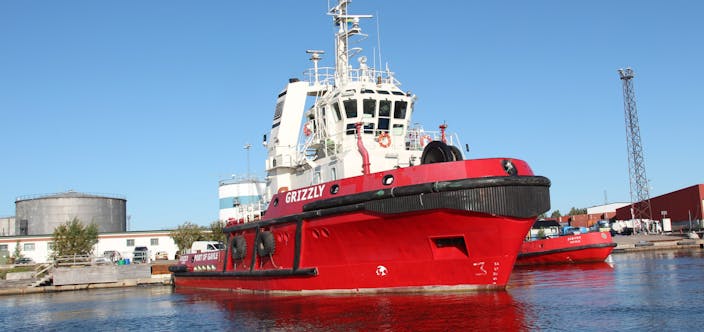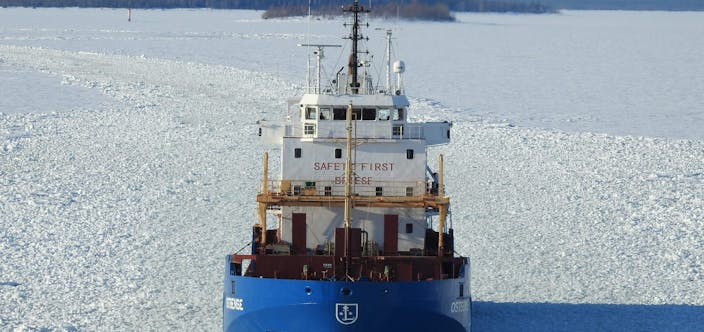New Risks in the Baltic Sea

During Maritime Day in Åland, a prominent panel featuring Henrik Ringbom, Mats Löfström, Jan Hanses, and Mats Johansson explored emerging security risks in the Baltic Sea. Drawing on their expertise in maritime law, insurance, and operations, the discussion offered valuable perspectives for today’s commercial marine operators. In our latest article, we distil their insights into key takeaways and practical loss prevention advice.
The Rise of the Shadow Fleet and Its Implications for Commercial Shipping
Since the onset of the war in Ukraine in 2022, the maritime landscape in the Baltic Sea and beyond has undergone a significant transformation. One of the most pressing developments is the emergence of the so-called shadow fleet — a parallel network of vessels operating outside the traditional regulatory and insurance frameworks. While not inherently malicious (existing for business rather than sabotage), this fleet introduces a host of new risks for commercial shipping, particularly in sensitive and strategically important regions like the Baltic Sea.
What Is the Shadow Fleet?
The shadow fleet refers to a growing number of vessels engaged in transporting Russian oil in ways that circumvent sanctions imposed by the EU, G7, and other allied nations. These sanctions implemented a price cap designed to limit Russia’s oil revenue without completely halting global supply. In response, Russia redirected its exports to more distant markets such as China, India, and Turkey — creating a surge in demand for tanker tonnage.
To meet this demand, older vessels were repurposed, often registered under obscure flags and insured through non-traditional methods with unknown insurers. AIS (Automatic Identification System) jamming and GPS (Global Positioning System) spoofing are tactics used to help keep the shadow fleet’s movements and operations, such as ship-to-ship transfers, hidden.
Why It Matters in the Baltic Sea
While the shadow fleet is global, its presence in the Baltic Sea is particularly concerning due to:
- Environmental Sensitivity: The Baltic is a semi-enclosed sea with a fragile ecosystem. A spill from a poorly maintained tanker could have catastrophic consequences.
- Winter Navigation Risks: Many shadow fleet vessels lack proper ice classification, making them ill-suited for safe operation during the ice season.
- Navigation Hazards: AIS jamming and GPS spoofing increase the risk of collisions, especially in narrow fairways and congested shipping lanes.
- Regulatory Limitations: These vessels often avoid territorial waters and ports of countries like Finland, limiting the ability of authorities to conduct inspections or enforce port state control.
A Variety of Challenges
From an insurer’s perspective, the shadow fleet presents a complex risk landscape:
- Unknown Counterparties: In the event of a collision, the identity, ownership, and insurance status of the shadow fleet vessel may be unclear or unverifiable.
- Claims Complications: Salvage operations, liability assessments, and financial settlements can be delayed or obstructed due to sanctions and lack of cooperation.
- Legal Ambiguity: Although UNCLOS permits innocent passage, its interpretation varies. Importantly, it would be incorrect to assume that international law entirely prohibits action. However, the challenge lies in timing: the right to intervene often arises only when a threat is already imminent. This raises a critical question—how do we define and recognise an imminent threat before it’s too late? For example, does a non-ice-class vessel entering icy waters constitute an imminent threat?
Regulatory and Industry Response
Right now, focus is mostly on de-escalating the risks. Authorities such as TRAFICOM and the Finnish Border Guard are actively monitoring the situation. Task forces are in place to track vessel movements and ensure navigational safety. However, enforcement is limited in international waters where these vessels are operating. They rarely enter territorial waters, meaning the legal possibilities for intercepting the vessels are very limited. A more coordinated international response is essential with governments working together to close legal loopholes.
A recent development has been the targeted sanctioning of individual vessels known to breach regulations, making it harder for them to secure cargo or access ports. This approach of listing specific vessels known to belong to the dark fleet seems to be proving more effective than broader sanctions. However, we need to go further than only targeting the illicit tankers, to hold accountable the entities ordering the oil and the ports complicit in receiving it, as they form the financial and logistical backbone of this trade.
Loss Prevention Recommendations
For shipowners and operators:
- Stay Informed: Monitor updates on shadow fleet activity and sanctioned vessels.
- Crew Preparedness: Ensure crews are trained to navigate safely amid GPS spoofing and AIS disruptions.
- Report Suspicious Activity: Encourage reporting of unsafe or suspicious vessel behaviour.
- Update Contingency Plans: Prepare for scenarios involving collisions or near-misses with shadow fleet vessels.
Conclusion
The shadow fleet is not a fleet of saboteurs — it is a commercial workaround born of geopolitical tension. However, its operations pose real and growing risks to maritime safety, environmental protection, and the integrity of the insurance industry. Proactive awareness, international cooperation, and robust loss prevention strategies are essential to navigating this evolving threat.





